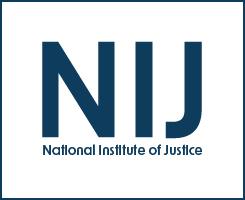Showing Results For:
Subtopic: Medicolegal death investigations
The upper thermal tolerance for a Texas population of the hairy maggot blow fly Chrysomya rufifacies Macquart (Diptera: Calliphoridae)
Date Published
2020
Journal
Ecological Entomology
Agencies
NIJ-Sponsored
Detection of fly artifacts from four species of necrophagous flies on household materials using immunoassays
Date Published
2020
Journal
International Journal of Legal Medicine
Agencies
NIJ-Sponsored
Compound-Specific Isotope Analysis of Human Hair: Predicting Behaviors and Biometrics beyond Dietary Factors
Date Published
2020
Journal
Analytical Chemistry
Agencies
NIJ-Sponsored
Facultative Viviparity in a Flesh Fly (Diptera: Sarcophagidae): Forensic Implications of High Variability in Rates of Oviparity in Blaesoxipha plinthopyga (Diptera: Sarcophagidae)
Date Published
2020
Journal
Journal of Medical Entomology
Agencies
NIJ-Sponsored
Recommended Practices for Macerating Human Thyroid Cartilage
Date Published
2020
Journal
Journal of Forensic Sciences
Agencies
NIJ-Sponsored
Detection and characterization of the new synthetic cannabinoid APP-BINACA in forensic casework
Date Published
2020
Journal
Drug Testing and Analysis
Agencies
NIJ-Sponsored
Dysbiosis in the Dead: Human Postmortem Microbiome Beta-Dispersion as an Indicator of Manner and Cause of Death
Date Published
2020
Journal
Frontiers in Microbiology
Agencies
NIJ-Sponsored
An Evaluation of Differentially Spliced Genes as Markers of Sex for Forensic Entomology
Date Published
2020
Journal
Journal of Forensic Sciences
Agencies
NIJ-Sponsored
Effect of Phenotype Selection on Genome Size Variation in Two Species of Diptera
Date Published
2020
Journal
Genes
Agencies
NIJ-Sponsored
An adaptive-remeshing framework to predict impact-induced skull fracture in infants
Date Published
2020
Journal
Biomechanics and Modeling in Mechanobiology
Agencies
NIJ-Sponsored
Recommendations for Maintaining a Dermestid Beetle Colony (Dermestes maculatus) for Processing Human Remains
Date Published
2020
Journal
Journal of Forensic Sciences
Agencies
NIJ-Sponsored
Post-Mortem Iris Recognition-A Survey and Assessment of the State of the Art
Date Published
2020
Journal
Ieee Access
Agencies
NIJ-Sponsored
A Sectioning, Coring, and Image Processing Guide for High-Throughput Cortical Bone Sample Procurement and Analysis for Synchrotron Micro-CT
Date Published
2020
Journal
Jove-Journal of Visualized Experiments
Agencies
NIJ-Sponsored
A computational framework for estimating ancestry and adult age-at-death from shape measures of the pubic symphysis
Date Published
2020
Journal
American Journal of Physical Anthropology
Agencies
NIJ-Sponsored
Improving Estimates of the Postmortem Interval with Metagenomics and Metabolomics
Date Published
2020
Agencies
NIJ-Sponsored
Just Science Podcast: Just the NIJ Needs Assessment of Forensic Laboratories and Medical Examiner/Coroner Offices
Date Published
January 2020
Agencies
NIJ-Sponsored
A More Timely Process for Identifying and Analyzing Trends of Emerging Novel Psychoactive Substances in the United States
Date Published
December 2019
Agencies
NIJ-Sponsored
Report to Congress: Needs Assessment of Forensic Laboratories and Medical Examiner/Coroner Offices
Date Published
December 2019
Agencies
NIJ
Notes from the Field: A Multijurisdictional Team Moved Cold Cases to the Front Burner
Date Published
December 2019
Agencies
NIJ
Vicarious Trauma Series Provides Coping Assistance to Forensic Professionals
Date Published
November 2019
Agencies
NIJ-Sponsored
Evaluation of High Density SNP Microarrays to Obtain Phenotypic and Ancestry Information From Skeletal Remains
Date Published
November 2019
Agencies
NIJ-Sponsored
Notes From the Field: Addressing Mental Health Is an Important Factor in Improving School Safety
Date Published
October 2019
Agencies
NIJ
Notes From the Field: Expanding the Cold Case Team Beyond Law Enforcement
Date Published
October 2019
Agencies
NIJ
Thermal-optical readout of multi-level thermal emissivity Ge2Sb2Te5 patterns
Date Published
September 2019
Journal
Materials Letters
Agencies
NIJ-Sponsored
ICPUTRD: Image Cloud Platform for Use in Tagging and Research on Decomposition, Final Report
Date Published
September 2019
Agencies
NIJ-Sponsored
Research Forensic Library
We invite you to also search the Research Forensic Library, a curated collection of publicly-accessible material relating to every discipline of the forensic sciences.



